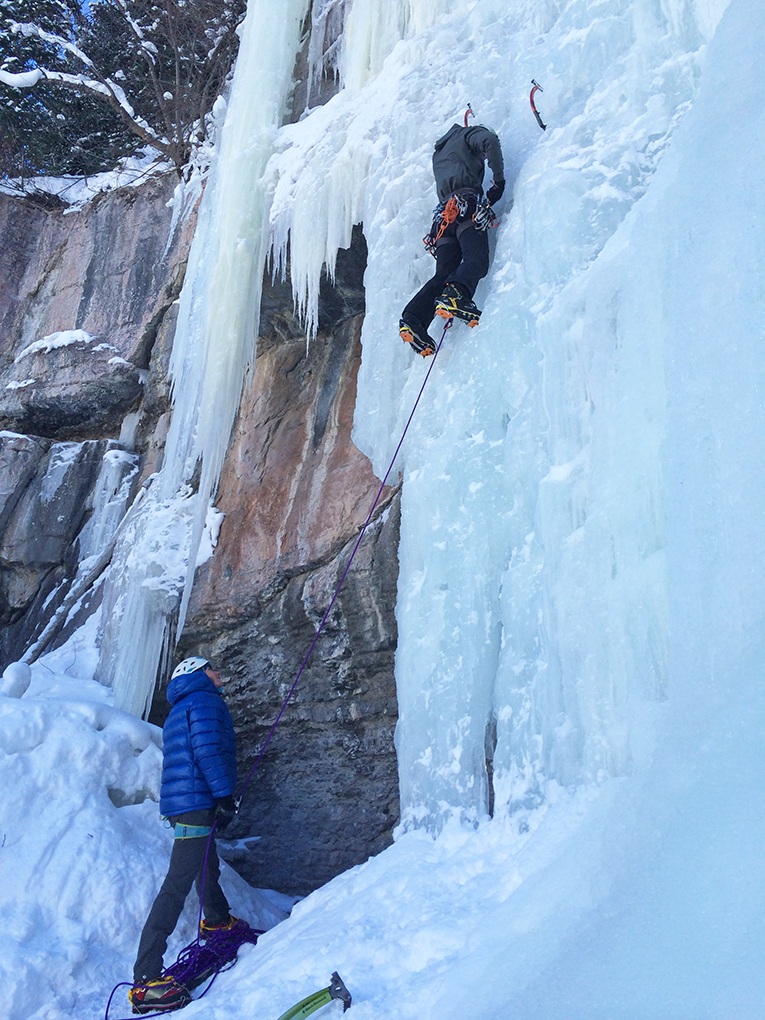Warmth
The 6oz fill weight of DownTek goose down means the Mojave has a good amount of loft. Fill power measurements range from 500 – 900, and, generally speaking, the higher fill-power number, the more loft a jacket (or sleeping bag) has. And the more loft a jacket has, the puffier it is and the warmer it is. And sure enough, in this area, the Mojave does quite well.
To provide a bit of context, the Mojave is warmer than the Patagonia Ultralight Down Hoody, and the the Arc’teryx Cerium LT Hoody, as the two feature much less down insulation than the Mojave.
When car camping, I often wore the Mojave over a cotton long sleeve shirt, and was comfortable at night in temperatures around 25 or 30 degrees. Colder than that, and I’d need to get extra layers involved. This is a noticeably lower temperature range than what it comfortable in the Cerium LT Hoody (maybe 10 degrees lower), and significantly lower than the Ultralight.
During the day, I would always have layers on underneath the Mojave, allowing me to put it on and take it off as needed while belaying. In this way, the Mojave worked beautifully as part of a layering system along with a mid layer and a soft shell, and allowed me to stay warm in single-digit temperatures.

Value: Fill Weight & Price
Obviously the Mojave is bulkier (less packable) and heavier than the Cerium LT Hoody or Ultralight Down Hoody; it weighs 16 oz, while the Cerium LT weighs 9.7 oz, and the Patagonia Ultralight Down Hoody weighs 9.3 oz. However, with its 800+ fill power down, for its loft, I’ve been very happy with the packability of the Mojave. And I also think the jacket presents a good value when you consider the fill weight of the down and the warmth and insulation that it provides.
The Cerium LT has less down insulation (3.35 oz compared to the Mojave’s 6.0 oz), and features some synthetic insulation placed in the shoulders and cuffs. Patagonia doesn’t list the fill weight of the down used in the Ultralight Down Hoody, though I doubt it’s higher than in the Cerium LT. Both jackets are colder and $50-65 more expensive than the Mojave. And the Patagonia Hi-Loft Down Sweater Hoody, which would seem to have a fill weight and loft closer to that of the Mojave, costs $350 and uses untreated down.
Considering the Mojave’s high loft (800+ fill power & 6.0 oz fill weight) and the warmth it provides, at $300, I think the Mojave is hard to beat.
Bottom Line
The Mojave jacket is simply awesome. It was my go-to jacket while belaying on both rock and ice throughout the fall, and I used it often in camp as well as at the crag.
It combines outstanding warmth, acceptable packability, a simple design, and treated down technology into a very attractive and functional package, and all things considered, comes at a very reasonable price.

I have the non-hoody version from a few years back and it’s an outstanding down jacket! Very durable, I hardly see any down leaking, decent water resistant shell fabric! That’s my go to jacket for cold days around town, dinner, usually have it on my car if I’m resort skiing and want to be outside for apres
I wish brooks-range had an ultralight version to be used as a layer piece!
Between this and the mountain hardwear Nilas, which would you recommend? I’m hoping to use one of the two as my down puffy on the coldest days in Boston, MA, and on mountaineering trips (Rainer, for example). I’m not sure how the two compare warmth-wise, which is my largest concern.